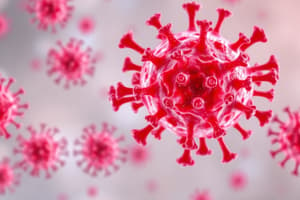Podcast
Questions and Answers
What are the key variances between antibody-mediated immunity and cell-mediated immunity?
What are the key variances between antibody-mediated immunity and cell-mediated immunity?
- Antibody-mediated immunity is primarily effective against intracellular pathogens.
- Cell-mediated immunity does not require recognition of antigens.
- Cell-mediated immunity involves T cells that directly attack infected cells. (correct)
- Only antibody-mediated immunity involves the use of antibodies.
Which of the following best describes natural passive immunity?
Which of the following best describes natural passive immunity?
- Immunity acquired from a mother’s antibodies through breastfeeding. (correct)
- Immunity developed through direct exposure to an antigen.
- Immunity gained from the administration of a vaccine.
- Immunity gained from exposure to disease in a clinical setting.
Which statement accurately defines artificial active immunity?
Which statement accurately defines artificial active immunity?
- Immunity gained from the environment.
- Immunity developed by natural infection.
- Immunity established through vaccination. (correct)
- Immunity provided through direct infusion of antibodies.
What is the primary role of T cells in cell-mediated immunity?
What is the primary role of T cells in cell-mediated immunity?
How does artificial passive immunity differ from natural passive immunity?
How does artificial passive immunity differ from natural passive immunity?
Which process is primarily associated with antibody-mediated immunity?
Which process is primarily associated with antibody-mediated immunity?
What does the self-assessment quiz aim to achieve for students in this module?
What does the self-assessment quiz aim to achieve for students in this module?
Which learning outcome pertains specifically to the understanding of immunization?
Which learning outcome pertains specifically to the understanding of immunization?
What triggers the production of antibodies in artificial active immunity?
What triggers the production of antibodies in artificial active immunity?
What describes the role of antibodies in the immune response?
What describes the role of antibodies in the immune response?
What is the primary characteristic of an immune response following vaccination?
What is the primary characteristic of an immune response following vaccination?
How does the body respond to subsequent infections from the same pathogen after vaccination?
How does the body respond to subsequent infections from the same pathogen after vaccination?
Which factor can limit the effectiveness of passive immunity?
Which factor can limit the effectiveness of passive immunity?
In the context of passive immunity, what is the main method of acquiring antibodies?
In the context of passive immunity, what is the main method of acquiring antibodies?
What is the characteristic of the specific immune response to an antigen?
What is the characteristic of the specific immune response to an antigen?
What is a potential reason for using antiserum in immunotherapy?
What is a potential reason for using antiserum in immunotherapy?
Flashcards
Antibody-mediated immunity
Antibody-mediated immunity
An immune response that uses antibodies to target and destroy pathogens.
Cell-mediated immunity
Cell-mediated immunity
An immune response that uses specialized cells to directly attack and destroy infected cells.
Passive immunity
Passive immunity
Receiving pre-formed antibodies from another source, offering temporary protection.
Active immunity
Active immunity
Signup and view all the flashcards
Natural passive immunity
Natural passive immunity
Signup and view all the flashcards
Artificial passive immunity
Artificial passive immunity
Signup and view all the flashcards
Natural active immunity
Natural active immunity
Signup and view all the flashcards
Artificial active immunity
Artificial active immunity
Signup and view all the flashcards
Immunological Memory
Immunological Memory
Signup and view all the flashcards
Vaccine
Vaccine
Signup and view all the flashcards
Antibodies
Antibodies
Signup and view all the flashcards
Antigen
Antigen
Signup and view all the flashcards
Immunization
Immunization
Signup and view all the flashcards
Complement System
Complement System
Signup and view all the flashcards
Immunoglobulin
Immunoglobulin
Signup and view all the flashcards
Study Notes
Immunology 2
- Module: Biomedical Sciences
- Tutor: Ms P Lazarou
- GDC Learning Outcomes
- Aim to apply principles of biomedical, behavioural, and material science to the dental therapy and dental hygienist practice.
- Develop knowledge of immunology.
Assessment
- Formative: Quiz
- Summative: Questions incorporated in Biomedical Sciences assessment.
Immunology 2 Content
- Read and complete a task from the article "Antibody-mediated vs cell-mediate immunity" (pages 5-8) by Warrington et al.
- Complete a self-assessment quiz on antibody-mediated and cell-mediated immunity
Intended Learning Outcomes: Immunology 2
- Review antibody-mediated and cell-mediated immunity by reading materials and completing a quiz.
- Define and recognise the variations between antibody-mediated and cell-mediated immunity.
- Recognise and explain passive and active immunisation.
Antibody-mediated and cell-mediated immunity
- Consolidation of learning, using:
- YouTube video: "The Cellular Immune Response" (link provided).
- YouTube video: "ANTIGEN PROCESSING AND PRESENTATION" (link provided).
Humoral and Cellular Immunity (Diagram Description)
- Humoral Immunity: Deals with extracellular microbes (e.g., bacteria). B lymphocytes secrete antibodies that neutralize, lyse (with complement), and phagocytose the microbes
- Cellular Immunity: Targets intracellular microbes (e.g., viruses). Antigen-presenting cells (APCs) present antigens to T-cells which then activate effector cells. These effector cells, such as macrophages and cytotoxic T cells, destroy the infected cells.
Passive and Active Immunity
-
Passive Immunity:
- Natural: Passed from mother to child through placenta/breast milk
- Artificial: Transfer of antibodies therapeutically (e.g., snake antivenom); transfer of immune cells or antibodies to a non-immune person. Short-duration; risk of running out of immunity.
-
Active Immunity:
- Natural: Develops after exposure to infection.
- Artificial: Develops after vaccination; specific antibodies against a specific agent. Long-lasting immunity with memory response, meaning the antigen is remembered and subsequent encounters result in faster, stronger responses.
Immunisation
- Artificial Active Immunity: antibodies develop after vaccination/immunization.
- How it Works:
- Introduces weakened/killed microorganisms to trigger an immunological memory.
- Subsequent infections elicit a stronger and faster response.
- Antibody and/or cell reaction to specific surface structures on the antigen, activating the complement system (refer to Immunology 1 for more details).
How Vaccines Work
- Small amount of harmless form of a disease is introduced.
- Body produces antibodies to fight it
- Subsequent exposure results in immunity because the body already recognizes and has antibodies to the disease.
References
- Mentioned article by Warrington et al., book by McMahon & Sloan, Allergy information from the British Society for Immunology, and reports on autoimmune awareness from Garcia P.
- Additional reference provided on immunodeficiency from the British Society for Immunology.
- Other reference given on autoimmune diseases from Hindawi.
Studying That Suits You
Use AI to generate personalized quizzes and flashcards to suit your learning preferences.



